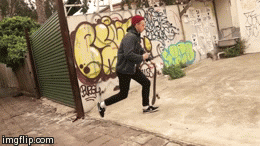This is our most conceptual sketch out of the fourteen. While it borrows ideas from platforms Youtube and Soundcloud, it is not a current option within any media (that I am aware of). This technology provides the option to comment, but it is specified at what point in the video that it is created. For example, if there were a crescendo in a video, or a scene of notable interest, there would be more comments surrounding that one point that anywhere else. The main positive of this is combining live technologies with older media such as non-interactive viewing platforms such as YouTube. While this is more of a post-production sketch that anything else, it provides a different style of information than any of our other experiments.
One of the things we discovered that could be discussed with more specificity than traditional commenting was references to events happening within the frame, such as ‘where is this?’ or attaching praise or information to a specific point in time. Also, fleeting comments, such as ‘good transition’, or ‘clever cinematography’, have no need to be seen for longer than the time it takes to read, they are simply passing observations.
We imagined that this style could create a space for comments to be placed on a more micro-orientated aspect of production, centering around certain parts rather than a video as a whole. While it is largely different to streaming, it does incorporate an element of ‘live’ media sharing, in the sense of having quick and relative content/feedback to a certain stimulus.

